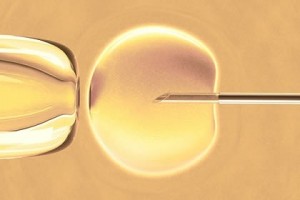 “Imagine in a thousand years someone doing IVF with a long-frozen embryo just to see what a 21st century – or, in this case, 20th century – human being was like. Just keeping them frozen – kicking the can down the road a little farther – seems wrong to me. . . . If you keep putting it off by keeping the embryos in liquid nitrogen limbo, who knows how they may eventually be used?” Hank Greely, Director of Stanford University’s Center for Law and the Biosciences.
“Imagine in a thousand years someone doing IVF with a long-frozen embryo just to see what a 21st century – or, in this case, 20th century – human being was like. Just keeping them frozen – kicking the can down the road a little farther – seems wrong to me. . . . If you keep putting it off by keeping the embryos in liquid nitrogen limbo, who knows how they may eventually be used?” Hank Greely, Director of Stanford University’s Center for Law and the Biosciences.
A heartwarming report was recently published by the San Jose Mercury News telling the story of a family whose year’s long dream of parenthood was finally realized when a couple they’d never met donated their 19-year-old frozen embryo to them for adoption:
“Baby Liam Burke is just learning to crawl. But he was conceived when Bill Clinton was president, the World Trade Center stood tall and home computers had the newfound ability to dial into something called the World Wide Web. Suspended 19 years in deep freeze, Liam is the beloved new son of Kelly Burke – and one of the oldest embryos ever thawed and restored to life.”
Aside from the compelling human interest factor, this story raises many important questions about the ethical implications of storing human beings in the freezer next to the ground beef and ice cream bars. Two decades ago, a couple struggling with infertility underwent in vitro fertilization. After so much pain and so much struggle, it is understandable that they didn’t want to forgo the chance to have more children. They elected to have their extra embryos preserved. Two decades later, thanks to the wonder of modern medicine a couple struggling with infertility used those preserved embryos and are now the proud parents of a healthy, happy baby boy.
What further proof does anyone need that life begins at conception? All the essential components that comprise the life and soul of Baby Liam have been there since the start, suspended in animation for 19 years just waiting for a warm womb in which to grow and thrive. This is a heartwarming story because it is the story of a tiny person that was given a chance at life. But, as this story reports, over half a million more tiny Liam’s are waiting for that same chance – a chance many will never get:
“Of these, about half will eventually be implanted into their mothers, according to ReproTech, a company that specializes in long-term storage of embryos for $400 a year in its facilities in Nevada, Minnesota, Texas and Florida. Most of the rest are discarded or donated to research. A lucky few – 1.5 percent – are, like Liam, gifted to women like Burke.”
Herein lies the ethical rub that underlies all the current debates over the legal and moral status of nascent life: Is the value of a person’s life dependent solely upon whether or not it is wanted? All these frozen embryos fall into one of three categories. A) They are tiny persons, just waiting for parents to come along and rescue them from their frozen prison, or B) they are organic material, mere fodder for scientific research, or C) they are mere reproductive detritus. It all depends on whether someone wants them, needs them, to live.
This kind of muddy morality is simply not tenable. If ever there was a need for ethical bright lines it is here. When a man and a woman come together and create new life, that life is either a person entitled to all the rights and protections and status of any other human life or it’s not. This is not an issue that should be ignored or left to chance. As heartless as it may sound to say, couples should think long and hard before undergoing in vitro and creating a bunch of new lives that might end up frozen for years or decades or longer. When you create a new life, whether in the bedroom or in a petri dish, you are responsible. You are obligated.
Sadly, because we’ve allowed this issue to progress so far without addressing the ethical implications, people don’t see it that way. In vitro stands as a final option for desperate couples at the end of their rope. They are so eager to get pregnant they would do anything to achieve their goal. They want to stack the odds in their favor, and if this means a frozen fate for a handful of unnecessary embryos then so be it.
Hank Greely hit the nail on the head. We cannot continue kicking the big questions down the road when it comes to the ethical quandaries surrounding this issue. If we continue to embrace an instrumental attitude towards unborn human life, it is only a matter of time before that attitude influences the way we treat other vulnerable members of the human race.
No doubt many of our readers will recall the famous tagline from Dr. Seuss’s famous book Horton Hears a Who: “A person’s a person, no matter how small.” Truer words were never spoken.



